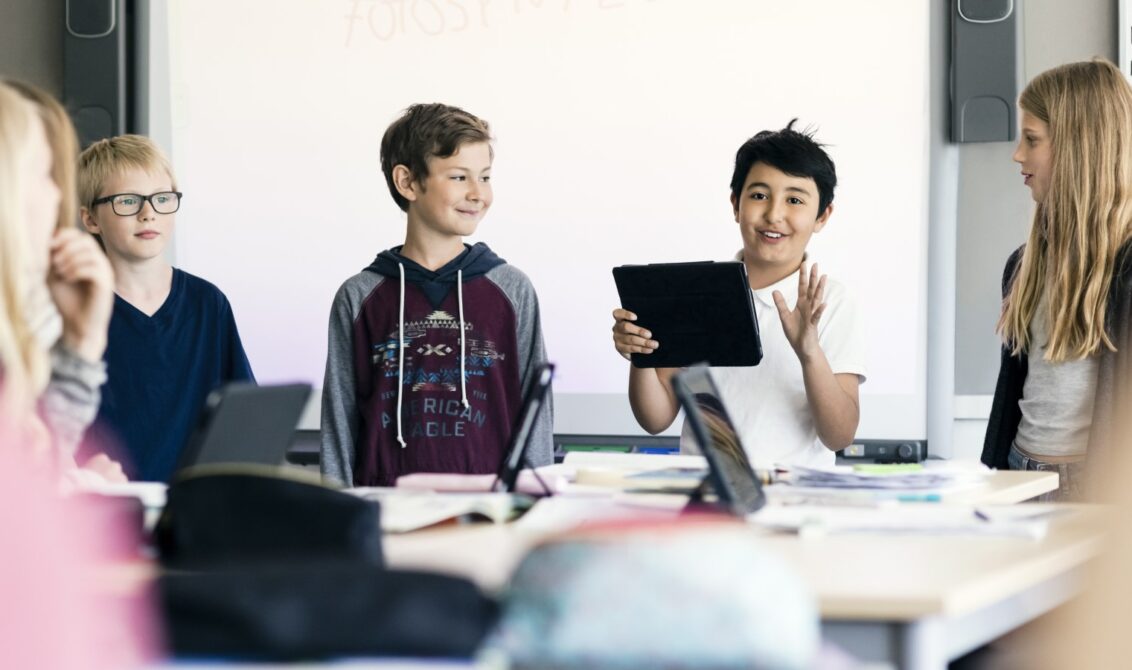
Disagreements are an inevitable part of human relationships. But, in an increasingly polarised society of social media echo chambers, fake news, populism and culture wars, what are students actually learning about how to handle disagreements?
Learning how to disagree respectfully is crucial for successful collaboration and communication. It’s an especially important skill for adolescents and will help them to navigate their social and academic lives. So, let’s take a look at some effective strategies that you can use in the classroom to help your students learn how to disagree as part of a respectful and productive conversation:
1. Set ground rules for discussion
Establishing clear ground rules for classroom discussions can help to create a safe and respectful environment where students feel comfortable sharing their opinions. This is especially important in today’s diverse society. Your students will come from different backgrounds and may have different opinions and beliefs. By setting ground rules for discussion, you’re helping students to engage in meaningful and productive conversations that promote learning and understanding.
It’s a good idea to involve your students, as they will be more invested in following rules that they’ve come up with themselves. Here are some suggestions to get you started:
- Avoid personal attacks
- Respect different viewpoints
- Leave disagreements in the classroom.
- If a disagreement does escalate into an argument, you can apply the restorative action approach to help students resolve it.
Read about the restorative action approach to behaviour management.
2. Model respectful discourse
It’s up to you to set an example. So, it is really important to avoid using language that might sound dismissive or condescending, such as ‘I don’t agree with you’ or ‘That’s a silly idea.’
Instead, make an effort to use language that acknowledges and respects different perspectives, such as ‘I see your point, but I have a different opinion’ or ‘Can you explain your thinking behind that idea?’
By using this type of non-judgmental language, you’ll embolden your students to share their ideas and opinions, building their confidence and self esteem.
Another important way to encourage respectful communication is by addressing language or behaviour that is problematic in the moment. If you observe an interaction that seems hurtful or disrespectful, it’s a teachable moment – an opportunity for you to intervene and explain why a specific tone or phrase is problematic. In doing so, you’ll be helping your students to understand the impact of their words and actions on others.
Learn more about promoting kindness in the classroom.
3. Teach your students how to listen
Listening is a really important skill for your students to develop. It is a central pillar of respectful discourse. When someone actively listens to you, it shows that they value your opinions and are willing to engage you in a meaningful conversation. So, encouraging students to listen actively to others’ opinions, without interrupting or dismissing them, can lead to productive discussions and an increased understanding of different perspectives.
Again, it’s important that you, as the teacher, model the kind of listening behaviour you want to see in your students. Active listening involves giving full attention to your students when they speak, asking clarifying questions and summarising their points to make sure you’ve understood. By modelling active listening, you are fostering a classroom culture of respectful communication.
It might be worth providing explicit instructions on active listening (e.g. keep your body language open, ask neutral questions, don’t interrupt) so students know exactly what is expected of them. Hopefully, if your students feel that they are truly being listened to, any frustrations they have in an ensuing discussion or disagreement will be minimised.
Learn more about active listening in the classroom.
4. Focus on fact-based discussion
Teach your students to focus on factual information, rather than personal opinions or anecdotes. This can help to bring objectivity to a discussion. Before diving into a classroom debate, provide resources for your students to research and analyse the themes you’re planning to talk about. Encourage the use of evidence and logical reasoning during discussions.
Not only will this help students to keep disagreements objective, it will also build their research and analytical skills, as well as encouraging them to think critically about the information they have gathered and the way that it has informed their argument.
Read more about how you can help your students to develop their critical thinking skills.
5. Discuss perspective and foster empathy
Teaching students to understand and respect different perspectives can help create empathy and increase the willingness to listen to others’ ideas. As the teacher, students will look to you for the final say on their disagreements, whether social or academic. So, it can be extremely powerful when you acknowledge that there are multiple valid perspectives on a given topic and that it’s okay to disagree.
Encourage your students to think about how different backgrounds, cultures and experiences shape people’s viewpoints, and challenge them to argue from the opposite perspective to their own. By showing your students both sides of an argument, you are helping them to form the powerful habit of empathy and curiosity, which will lead to more inclusive and diverse classroom discussions.
Obviously, this doesn’t extend to every topic – nobody is suggesting that you condone harmful views. However, there is a power in saying that you can see both sides of an argument – it helps your students to understand that differing opinions are a natural part of healthy discourse.
Learn more about fostering a culture of diversity and inclusion in your classroom.
6. Hold formal debates
Debates are a formal way of presenting opposing viewpoints to a group audience. Schools often have debate clubs, where students can practise their public speaking and debating skills, but debates are also a useful classroom exercise. That way, students who are more introverted or shy will also have the opportunity to practise their public speaking, and all your students will learn how to articulate their opinions and present logical arguments to support their views.
Much like setting ground rules, it’s a good idea to involve your students at the very start of the planning stage, by asking them to propose topics that they are interested in debating together as a group.
Then, assign topics (one topic per six students) and create two teams per topic, for and against. Students will take the role of the opening speaker, rebuttal speaker or concluding speaker on each team, with the rest of the class as the audience. You can do a bit of social engineering here by pairing students who don’t usually work together, or pairing more introverted students with extroverts.
Each team researches and prepares their arguments to be presented. Explain the kind of sources they can cite (newspaper, magazine or journal articles, interviews with experts, books or documentaries) and the type of information that is less valid (anecdote or personal experience).
During the debate, the rest of the class can watch and then vote for their preferred side by raising hands. You can also give students the option to ask questions of the two debate teams. After the debate is over, ask your students if anyone changed their minds – you might just be surprised!
Learn how to facilitate a classroom debate.
7. Encourage reflection
Reflection is an important step in learning that allows students to think critically about their experiences and improve their future practices. Ask your students to take notes about their classroom interactions over the course of a week. Encourage them to reflect on any disagreements that arose during classroom discussions.
Then, talk to them about the strategies they’ve been using, and how they could apply these strategies in other contexts, for example at home, in the workplace or online. Encouraging students to reflect on their communication styles and how they can improve can lead to positive social learning and emotional development.
By teaching students how to disagree respectfully, you will be providing them with a crucial skill. They’ll be better equipped to navigate relationships, have productive conversations and engage more fully in a diverse and complex world.
Subscribe to our blog
If you’d like to stay up to date with our latest articles, why not subscribe to our blog? You’ll get a fortnightly roundup of the articles you’ve missed straight to your inbox, plus links to free teaching resources.

